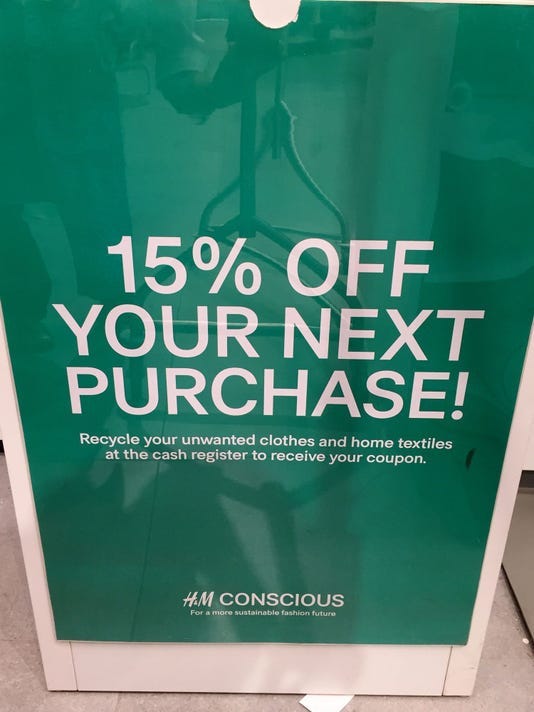Fast Fashion, Greenwashing, and Sustainability
How the clothes in your suitcase are screwing up the planet more than the flight you put them on.

How the clothes in your suitcase are screwing up the planet more than the flight you put them on.
I was watching this week’s episode of Patriot Act with Hasan Minhaj on Netflix, and what he said left a huge impact on me.
For instance, did you know that an average American woman buys 68 new items of clothing each year, out of which, 50% are not worn more than thrice?
All this is mainly because of a dominant force in the retail industry: Fast Fashion.
According to Investopedia, “Fast fashion” is a term used by fashion retailers to describe inexpensive designs that move quickly from the catwalk to stores to meet new trends. It is about making trendy clothes quick, cheap, and disposable. This “see now, buy now” kind of retail environment is made a reality by brands like Zara, H&M, and Shein that offer the latest designs at affordable prices.

We all know fast fashion is stylish and cheap. Add to it the pressure social media puts on people to avoid rotating garments so that our Instagram feeds look stylish and colourful, and the millennials just can’t stop buying new clothes each week.
As responsible citizens, we need to know what these clothes are doing to the planet.
Did you know, in 2015, the greenhouse gases from textile production were more than the emissions of all flights and maritime shipping combined?
The problem starts where the clothes start: the manufacturing of the fabric. A simple cotton jacket might look great, but did you know that, on an average, roughly 10330 litres of water go into its manufacturing? (If you’re wondering, that is the equivalent of the total drinking water an average 24-year-old consumes in his ENTIRE LIFE). Synthetic fabrics are even worse. Polyester, nylon, and spandex use almost 342 barrels of oil in a year. These statistics are only for the manufacturing of fabric. The processes involved in the making of clothes, including processing, dyeing, finishing etc. use a lot of toxic chemicals that end up being dumped into nearby rivers.
As if making clothes wasn’t bad enough, getting rid of them is even worse.
For starters, here’s a hard fact: the average American throws away more than 36 kg (80 lbs) of clothes each year.
Most of you reading this might think you’re different. That you haven’t been irresponsible in buying clothes. That you have been donating old clothes, right?
Well, most of the donated clothes are still trash. A study by Slate in June 2012 claims that one Salvation Army centre in New York alone generates more than 18 tons of unwanted waste every three days. The clothes charities can’t sell or give away often end up being sold by the ton to buyers in developing countries like South Africa or Kenya, where most of last year’s fashion ends up filling this year’s landfills.
It is not as if companies aren’t aware of this scenario. Most of them try their best to show they care for the environment. But, the sad part is all of them indulge in Greenwashing, which basically means companies try to portray themselves as way more “green” than they actually are.
H&M’s recycle bins are an interesting case study in this regard. As a part of their “H&M Conscious” campaign, people are encouraged to drop their old clothes in recycle bins. But, almost 90% of such clothes either get trashed or burned. So, all H&M does is give its customers a “15% discount on next purchase” code that they can use to buy more clothes that they will soon be “recycling”.

In addition, most of these fast-fashion brands make a lot of claims using words that have no legal definition — like green, eco-friendly, sustainable, ethical and responsibly-made — or make vague claims that can’t be verified — like “ecologically grown cotton” or “sustainably-produced polyurethane”.
What is the remedy, you ask? Should we stop buying clothes?
Well, the good news is — no, you don’t need to stop buying clothes altogether. Here is what you can do-
- Wear your clothes for longer. A study shows using clothes for 9 months longer can help reduce an individual’s carbon footprint for the garment by 30%.
- Buy second-hand (or “preloved”, as they are called these days) clothes. If everyone bought one used item a year instead of new, it could save nearly 6 pounds of CO2 emissions — that is equivalent to removing half a million cars off the road for one year.
Just by wearing your clothes longer or by buying second-hand clothes, you can make a huge difference. That might feel like a lot, but we have only one planet. If its inhabitants don’t care about sustainability, who will?
Footnotes
[2] DK Science: Synthetic Fabrics
[3] The Salvation Army Probably Can’t Use Your Clothes
[4] The clothes you donate don’t always end up on people’s backs
[5] What is greenwashing? — Definition from WhatIs.com
[6] Recycling clothing pays off at H&M
